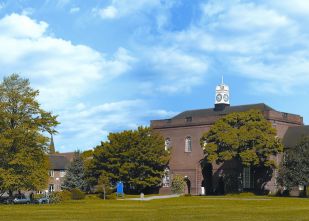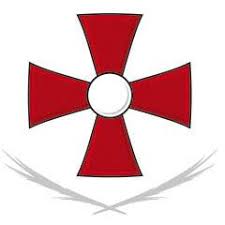Related Research Articles
Education in England is overseen by the Department for Education. Local government authorities are responsible for implementing policy for public education and state-funded schools at a local level. State-funded schools may be selective grammar schools or non-selective comprehensive schools. All state schools are subject to assessment and inspection by the government department Ofsted. England also has private schools and home education; legally, parents may choose to educate their children by any suitable means.
The education system in Northern Ireland differs from elsewhere in the United Kingdom, but is similar to the Republic of Ireland in sharing in the development of the national school system and serving a similar society with a relatively rural population. A child's age on 1 July determines the point of entry into the relevant stage of education in the region, whereas the relevant date in England and Wales is 1 September.

A state school, public school, or government school is a primary or secondary school that educates all students without charge. Such schools are funded in whole or in part by taxation and operated by the government of the state.
A parochial school is a private primary or secondary school affiliated with a religious organization, and whose curriculum includes general religious education in addition to secular subjects, such as science, mathematics and language arts. The word parochial comes from the same root as "parish", and parochial schools were originally the educational wing of the local parish church. Christian parochial schools are called "church schools" or "Christian schools."

A comprehensive school is a secondary school for pupils aged 11–16 or 11–18, that does not select its intake on the basis of academic achievement or aptitude, in contrast to a selective school system where admission is restricted on the basis of selection criteria, usually academic performance. The term is commonly used in relation to England and Wales, where comprehensive schools were introduced as state schools on an experimental basis in the 1940s and became more widespread from 1965.
Grant-maintained schools or GM schools were state schools in England and Wales between 1988 and 1998 that had opted out of local government control, being funded directly by a grant from central government. Some of these schools had selective admissions procedures.
Catholic schools are parochial pre-primary, primary and secondary educational institutions administered in association with the Catholic Church. As of 2011, the Catholic Church operates the world's largest religious, non-governmental school system. In 2016, the church supported 43,800 secondary schools and 95,200 primary schools. The schools include religious education alongside secular subjects in their curriculum.
In England, Wales and Northern Ireland, school governors are the overseers of a school. In state schools, they have three main functions:

An academy school in England is a state-funded school which is directly funded by the Department for Education and independent of local authority control. The terms of the arrangements are set out in individual Academy Funding Agreements. 80% of secondary schools, 40% of primary schools and 44% of special schools are academies.
In England and Wales, a foundation school is a state-funded school in which the governing body has greater freedom in the running of the school than in community schools. Foundation schools were set up under the School Standards and Framework Act 1998 to replace grant-maintained schools, which were funded directly by central government. Grant-maintained schools that had previously been voluntary controlled or county schools usually became foundation schools.
A faith school is a school in the United Kingdom that teaches a general curriculum but which has a particular religious character or formal links with a religious or faith-based organisation. The term is most commonly applied to state-funded faith schools, although many independent schools also have religious characteristics.

A direct grant grammar school was a type of selective secondary school in the United Kingdom that existed between 1945 and 1976. One quarter of the places in these schools were directly funded by central government, while the remainder attracted fees, some paid by a Local Education Authority and some by the pupils' parents or guardians. On average, the schools received just over half of their income from the state.

A National school was a school founded in 19th-century England and Wales by the National Society for Promoting Religious Education. These schools provided elementary education, in accordance with the teaching of the Church of England, to the children of the poor. Together with the less numerous British schools of the British and Foreign School Society, they provided the first near-universal system of elementary education in England and Wales.
A voluntary aided school is a state-funded school in England and Wales in which a foundation or trust contributes to building costs and has a substantial influence in the running of the school. In most cases the foundation or trust owns the buildings.
A community school in England and Wales is a type of state-funded school in which the local education authority employs the school's staff, is responsible for the school's admissions and owns the school's estate. The formal use of this name to describe a school derives from the School Standards and Framework Act 1998.

St Richard Reynolds Catholic College is a coeducational Catholic school for pupils aged 4 to 18. It is located in Twickenham, in the London Borough of Richmond upon Thames, England.
The Fair Admissions Campaign aims to abolish the faith-based selection of pupils in state funded schools in England and Wales.

English state-funded schools, commonly known as state schools, provide education to pupils between the ages of 3 and 18 without charge. Approximately 93% of English schoolchildren attend such 24,000 schools. Since 2008 about 75% have attained "academy status", which essentially gives them a higher budget per pupil from the Department for Education.

A comprehensive school, or simply a comprehensive, typically describes a secondary school for pupils aged approximately 11–16 or 11–18, that does not select its intake on the basis of academic achievement or aptitude, in contrast to a selective school system where admission is restricted on the basis of selection criteria, usually academic performance. In England and Wales comprehensive schools were introduced as state schools on an experimental basis in the 1940s and became more widespread from 1965. They may be part of a local education authority or be a self governing academy or part of a multi-academy trust.
The 50% Rule in English faith school admissions was introduced in 2010 and stipulates that where newly established academies with a religious character are oversubscribed, at least 50% of their places must be open places, i.e. allocated without reference to faith. The rule is sometimes referred to as the Faith Cap on admissions. However, as the open places are just as accessible to faith applicants as non-faith applicants, in practice the rule does not explicitly prevent such schools from having more than 50% of students with a faith affiliation.
References
- ↑ "Equality Act 2010". legislation.gov.uk. The National Archives. Retrieved 22 April 2014.
- ↑ "Categories of Schools - Overview". Governornet. Department for Children, Schools and Families. 5 September 2003. Archived from the original on 22 April 2009. Retrieved 20 January 2009.
- ↑ "The Composition of Schools in England" (PDF). Department for Children, Schools and Families. June 2008. Archived from the original (PDF) on 24 February 2009. Retrieved 22 January 2009.
- ↑ Types of School Archived 2009-05-04 at the Wayback Machine , Citizens Advice Bureau.
- ↑ Lawson, John; Silver, Harold (1973). A Social History of Education in England. Routledge. ISBN 978-0-415-43251-1.
- ↑ "Pupil Characteristics and Class Sizes in Maintained Schools in England: January 2008 (Provisional)". Department for Children, Schools and Families.
- ↑ "Challenge local authorities". FAC Website. Fair Admissions Campaign. Retrieved 22 April 2014.